#Natalia Pushkina
Text
It was at a snowy Christmas ball in December of 1828 that the fates of Pushkin and Natalia first met. In a white dress, with a golden halo wreathing her shiny dark hair, she amazed everyone with her beauty. Her heavy curls tumbled around her like clouds, and her eyes sparkled like stars. The poet in love will remember: “When I saw her for the first time, I fell in love with her, my head was spinning…” And on the page, between these poetic lines, Pushkin's light pen sketches her sweet image; as if lost in thought, he draws an angel. But the angel is completely earthly - she does not soar in the clouds, but walks on the firmament, her slippers gracefully entwined in ballet ribbons, her eyes and curly lashes lowered. From that fateful Christmas of 1828, the beauitful Natalia Goncharova will enter Pushkin’s life, his dreams and hopes. She will enter to stay in it forever.
Larisa Andreevna Cherkashina, Natalia Goncharova
#natalia 👏🏻 pushkina 👏🏻 did 👏🏻 nothing 👏🏻 wrong#put it on my grave!#alexander pushkin#natalia pushkina#history#literature#marshmallow worlds
107 notes
·
View notes
Note
Throwing my questions in the ring(づ ̄ ³ ̄)づ
Two for Alex:
- How is it teaching in Valhalla? Anything that would be different from human education?
- WHO IS THE BIG SPOON AND LITTLE SPOON!
________________________________________The rest are general questions for everyone!
- What is the most dumb thing each one has ever done?
-Is there someone they like to mess with specifically?
-Do they have any regrets from the time they were alive?
- Who would most likely befriend gods? If so which gods?
That's all pookie<( ̄︶ ̄)>
AAAA THANK U FOR THE QUESTIONS POOKIE!! <3
For Alex: It is different in a sense that this man has to teach the young gods and OH LORD HE NEEDS SLEEP SO BAD. Legit, despite the fact that he is a human he knows some things much better than anyone (like old magic and the generall customs and rituals of the different gods) so the Academia just places him in whicherver class possible.
And another thing that is different, is that many young gods are just- brats. Imagine the worst class possible and Alex gotta deal with them all. (which, he can. at the end of the day, he is a great techer and knows how to do his work. but it aint his fault if some of his students dont want to remeber anything)
In short- its more stressful (and he needs a long vacation which is long overdue-)
AND FOR THE BIG AND LIL SPOON QUESTION!!
Very silly but Alex is actually the big spoon! Even if Jack tries- the british man always ends up being the lil spoon.
(Alex is like a smoll cuddly bear ngl. very nice to hug and will hold u comfortably)
Now to the rest!
What is the most dumb thing each one has ever done?
= Alex: Some silly things did happen but i dont think he ever had a "the most dumb thing" kind of situation. Maybe he took on the shirt the wrong way or mixed up some books. (or randomly switches to russian when speaking to Jack. especially when nervous- only to then translate it all to him-)
Pero: Eazy- Thought she could eavesdrop on Jack and Alex (cuz gurl was worried about her brother) and didnt notice the door was slighly open. she fell into the room (she refused to leave her chambers for almost 2 weeks)
Astor: Casted the wrong spell even though he did it like 100 times- welp there was a storm aferwards
Anderson: Tbh- i am unsure?
Pushkin: Duell his friend. He died afterwards
Natalia: perhaps not stopping her husband from duelling his friend-
Is there someone they like to mess with specifically?
Alex and Pero frequently mess with each other- if the siblings dont go one day without messing with each other, something is off
Astor: It seems to be so bonkers- but Loki, Heimdall and Brunhilde.
Andersen: Fr- this man prefers not to mess with anyone. He had enough-
Pushkin: Guess what, with his Friend whom he duelled (aka George-Charles)
Natalia: No one really. However if you mess with her she will not hesitate to throw whatever at you.
Do they have any regrets from the time they were alive?
Alex: Not saving his sister from Luke Evans (aka the actual Ripper) Even in Valhalla after finally beinf reunited, he still blames himself for it terribly.
Pero: If she wouldnt have found Luke Evans in Valhalla (and send him to Nifelheim), she would be like "not killing him", but she did that a n d she has her brother back, so pretty much any regrets she had just dissapear.
Astor: Not being able to see his mother one last time before going into the battle where he lost his life.
Andersen: Being alone, in a romantic sense. While he had his friends of course, but not someone he had a close connection with.
Pushkin: IRONICALLY- duelling Charles. Because it was actually stupid and he acted on raw emotions.
Natalia: While she may had some, while still alive, fortune turned to her and basically made her life easier which made her regrets, of being alone go away.
Who would most likely befriend gods? If so which gods?
Who def would befriend gods is for sure Alex, Astor, Natalia and somewhat Pero.
Alex has a close connection to the Nordic Pantheon, just like Pero, so that leads to some friendly interactions from time to time. He gets along with Frejya and Odin actually. He had some relations with the Slavic Pantheon but tries to ignore them as good as possible- the Goddess Zvezda is someone he does however talk to, but only because of his sister Pero (who has a lil crush on this Goddess)
For Astor- he has to interact with pretty much every god. Unofficially he is Lokis right hand so he almost always has some bussiness with some other gods. He would for sure be friends with Buddah tho and Anubis.
Natalia would most likley befriend Aphrodite and Hera.
woooo! this was a long one haha :D
sorry if there are some spelling mistakes- its like 2 am or sum here so- slay
#cyber talks#record of ragnarok#record of ragnarok oc#alexander volkov#pero#hans christian andersen#alexander pushkin#natalia pushkina#Astor#mii-cherry
5 notes
·
View notes
Photo




Some more dresses from 1849 -
Top: 1849-1850 Anna Pavlovna by Nicaise de Keyser (Hermitage). From their Web site 1343X1920 @72 542kj.
Second row left: 1849 Portrait de Louise Marie Thérèse d'Artois, la duchesse de Parme et ses enfants by Prosper Raffy (Château de Chambord - Chambord, region Centre, France) magika42000 photostream on flickr Louise d'Artois 788X1024 @72 475kj.
Second row right: 1849 Natalia Pushkina by Ivan Makarov (Pushkin Apartment Museum - St. Petersburg, St. Petersburg Federal City, Russia). From Wikimedia; removed spots and flaws and fixed edges with Photoshop and enlarged by half 900X1047 @96 322kj.
Third row: 1849 Princess Augusta Wilhelmina Louisa of Hesse, Duchess of Cambridge by Franz Xaver Winterhalter (auctioned by Sotheby's). From mutualart.com/Artwork/PORTRAIT-OF-PRINCESS-AUGUSTA-WILHELMINA-/DF34223E0CB33911; doubled size 804X1020 @96 165kj. Her granddaughter Mary became Queen Consort of the United Kingdom when her husband ascended the throne as George V in 1910. The city of Long Beach, California has a huge monument to her moored at their port.
#1849 fashion#Romantic era fashion#early Victorian fashion#Anna Pavlovna#koningin der Nederlanden#Nicaise de Keyser#tiara#side curl coiffure#robes#regalia#Louise Marie Thérèse d'Artois#Prosper Raffy#lace bertha#Natalia Pushkina#Ivan Makarov#neck band#modesty piece#off shoulder scoop neckline#fur-trimmed wrap#Augusta Wilhelmina Louisa of Hesse#Duchess of Cambridge#Franz Xaver Winterhalter
7 notes
·
View notes
Note
Instead of Natalia marrying again, if she was still single by the time older D'Anthès comes back to Russia, do you think she would've kissed him back when he tried to kiss her?
I wish they ended up together (at least in the manga)
Kiss him? Maybe yes.
Marry him? It would’ve depended on the influence of her family at the moment; we do still see Alexandra guilt trip her and who knows what her children would’ve thought of the man who killed their father.
He was also her dead sister’s husband, and Natalia was very duty ingrained by those surrounding her 💔
0 notes
Text

A ring made of hair, according to legend, owned by Natalia Goncharova and presented by her to her fiancé - A.S. Pushkin. Russia, the first third of the XIX century. On the ring there is an insert (or lock) made of gold (0.7×1.1 cm) with an engraved monogram "NG". It is preserved in a ladies' velvet handbag stuffed with satin embroidered with metal beads; there is also a piece of sermot and a cut of posum, attached is a portrait of N.N. Goncharova (engraving of the XIX century). Everything is enclosed in a Karelian birch box.
A ring, according to legend, belonged to Natalia Nikolaevna Goncharova (future Pushkina), woven by her own hair for a gift to her fiancé, a great Russian poet. Monogram "N. G." ("Natalia Goncharova") corresponds to her maiden name, which she was called before the wedding. Probably, the ring was handed over in the spring of 1830 in Moscow, m.b. after April 6, when Pushkin received consent to the marriage.
In Pushkin's time, hair jewelry was in great fashion: this weather came from France and quickly spread. The most frequent was the gift of such a ring by a girl to her betrothed, which was reflected in French novels of the Romantic era. Such rings could also be of a memorial nature. K.N.'s request is known. Batyushkova, addressed to a friend: "Do you want me to make a very nice gift? Order me a ring of your hair, all three, with the hair of your late sister, you will lend me very much with it." Fragile, subject to decay, often stored secretly (since the material of manufacture added special intimacy to the gift), they have hardly survived to the present day, except for some exhibits, whose memorial value served as a certificate of protection for them.
Litfund
99 notes
·
View notes
Text

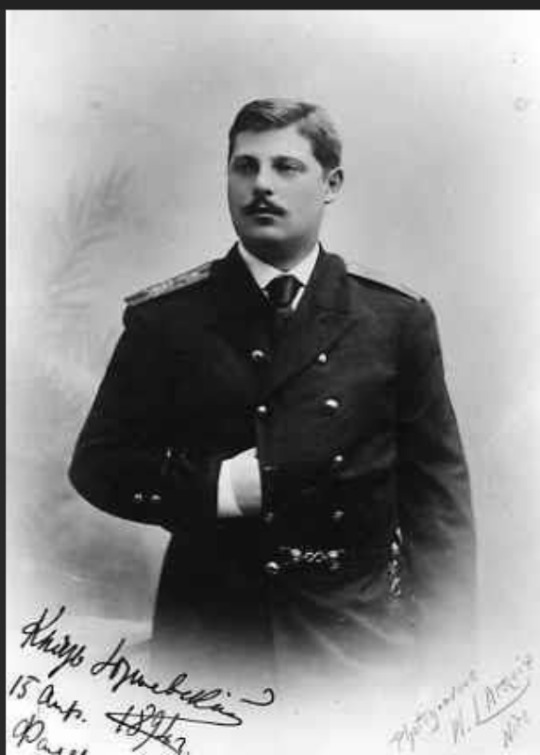


What happened to the children of Alexander II's marriage to Catherine Dolgorukaya?
Emperor Alexander II had four children by his second wife, Princess Catherine Dolgorukaya: Alexander, Prince Yurievsky (1872 -1913), Olga, Princess Yurievskaya (1873 -1925), Boris Alexandrovich Yurievsky (1876 - 1876) and Catherine, Princess Yurievskaya (1878 - 1959). They were all born out of wedlock (Alexander and Catherine married in 1880). Their father legitimized and ennobled them before his murder by a terrorist in 1881.
Prince Alexander Yurievsky married twice. His half-brother Emperor Alexander III would not let him enter the army, so he joined the navy under his uncle Grand Duke Alexis Alexandrovich. Although Alexis tried to help him, his performance and behavior were so dismal that Alexis had to dismiss him. Eventually, Nicholas II allowed him into the army, and he retired as a captain when he married. He was a prominent figure in Saint Petersburg society.
Princess Olga Yurievskaya married Georg Nikolaus, Count of Merenberg, a morganatic son of Prince Nikolaus Wilhelm of Nassau by his wife, Natalia Alexandrovna Pushkina, daughter of Alexander Pushkin. Her husband was a brother of Sophie of Merenberg, the wife of Grand Duke Mikhail Mikhailovich (Miche-Miche)
Princess Catherine Yurievskaya married, firstly, Prince Alexander Vladimirovich Baryatinsky; secondly, she married Prince Sergei Platonovich Obolensky. She was distantly related to both.
A biography of Princess Catherine was written by Princess Marthe Bibesco. This biography was the basis for two films. The first film, Katia, was released in 1938 and the second also named Katia, released in 1959 featured Romy Schneider. (gcl)
#russian history#romanov family#imperial russia#Alexander II#Princess Catherine Dolgorukaya#Princess Olga Yurievskaya#Princess Catherine Yurievskaya#Prince Alexander Yurievsky
13 notes
·
View notes
Text
in the London Library
Alphabetisation is your friend.
it is the friend who, sensing you tire of Timothy Morton and are plagued still by a short story set in Hinchingbrook Park, recommends you go in search of your last successful local introduction -- Victor Serge, alongside of whom sits: Gemma Seltzer (to finally tell the ventriloquist dummy story you have been waiting for ever since that ride home from Deptford) and Ponsonberry Senior (if you recall correctly) whose "Diary of Mrs. Pepys" certainly relieves you of the burden of some sort of serialized Samuel, for it (the fictionalised diary of Elizabeth Pepys, a wondrous character) is the best enjoyment you will receive as a legacy of that annual celebration of 'his' stone-day. And atop the Diary sits "She Married Pushkin," so you take her out for a smoke, since she (not the titular she, but the long-lost Goncharoff she plagued by the need to finish her own serialised life of the long gone) reckons Natalia should have as much of a say as Elizabeth. And though Natalia had the more glamorous oaf, Elizabeth gets all the good lines.
You don't know all that immediately but you will, once you cast off Seltzer and Serge and, waylaid by "Ness", which grabbed you just as you were leaving and, truth be told, does sweep you off your feet for the rest of the dance because for a 40 minutes you really don't need anything else but McFarlane on Orford (not Loch).
But Elizabeth Pepys and Natalia Pushkina have been great mates over this 'arctic' (let's face it, it doesnt mean what it used to mean) December.
As kindred spirits as alphabetisation itself.
0 notes
Photo
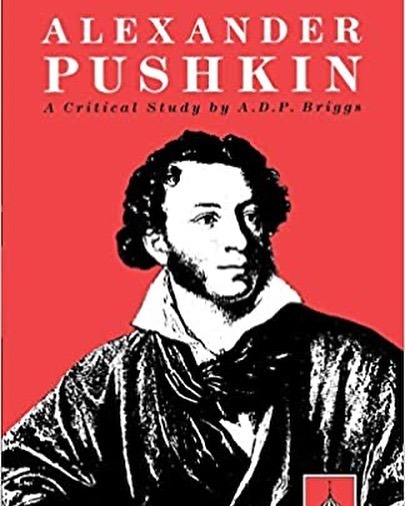
Alexander Sergeyevich Pushkin (May 26, 1799 - January 29, 1837) was a Russian poet, playwright, and novelist of the Romantic era who is considered by many to be the greatest Russian poet and the founder of modern Russian literature. He was born into the Russian nobility in Moscow. His father, Sergey Lvovich Pushkin, belonged to Pushkin noble family. A maternal great-grandfather was African-born general Abram Petrovich Gannibal. He published his first poem at the age of 15 and was widely recognized by the literary establishment by the time of his graduation from the Tsarskoye Selo Lyceum. He recited his controversial poem "Ode to Liberty", one of several that led to his being exiled by Tsar Alexander the First. While under the strict surveillance of the Tsar's political police and unable to publish, he wrote his most famous play, the drama Boris Godunov. His novel in verse, Eugene Onegin, was serialized between 1825 and 1832. He was fatally wounded in a duel with his brother-in-law, Georges-Charles de Heeckeren d'Anthès, known as Dantes-Gekkern, a French officer serving with the Chevalier Guard Regiment, who attempted to seduce the poet's wife, Natalia Pushkina. #africanhistory365 #africanexcellence https://www.instagram.com/p/CeBBB1XOvYbuHTF1BsTPsNKrwdh0Ue3jjQOdo00/?igshid=NGJjMDIxMWI=
0 notes
Text
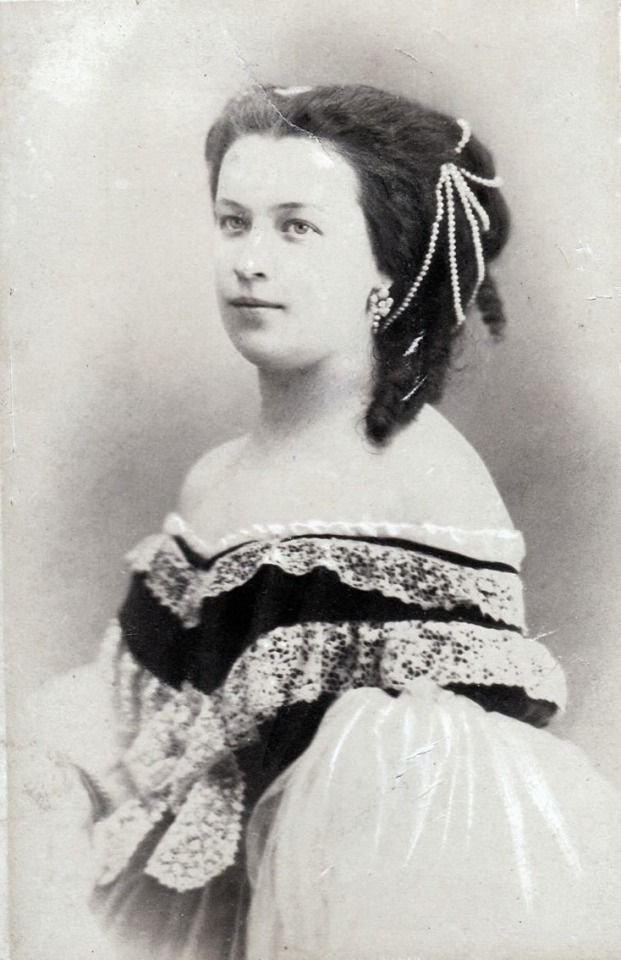
A rare photo of Natalya Alexandrovna Pushkina, later Countess Natalia of Merenberg. Natalya was the daughter of the Russian writer Alexander Pushkin and mother of Countess Sophie von Merenberg (later Countess Sophie de Torby). Sophie strongly resembles her mother in my opinion (in looks and some personality traits).
Source: Wikimedia Commons
28 notes
·
View notes
Photo



She’s extremely beautiful 🖤
#katherine langford#elle russia#magazine#new#photoshoot#2020#natalia pushkina#photography#black & white#gorgeous#woman#long hair#make-up#goals#13 reasons why#actress
16 notes
·
View notes
Photo
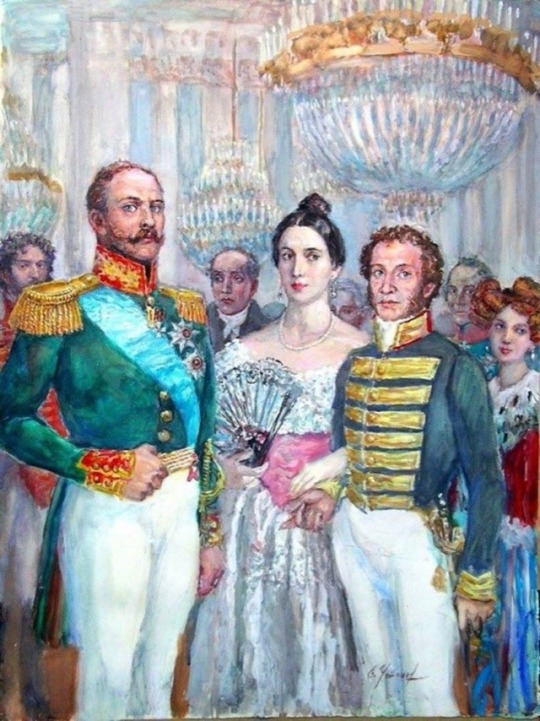
The Iron Tsar meets the Pushkins.
39 notes
·
View notes
Text
Only a chosen few have the key to my heart.
Natalia Pushkina, 1849
68 notes
·
View notes
Photo
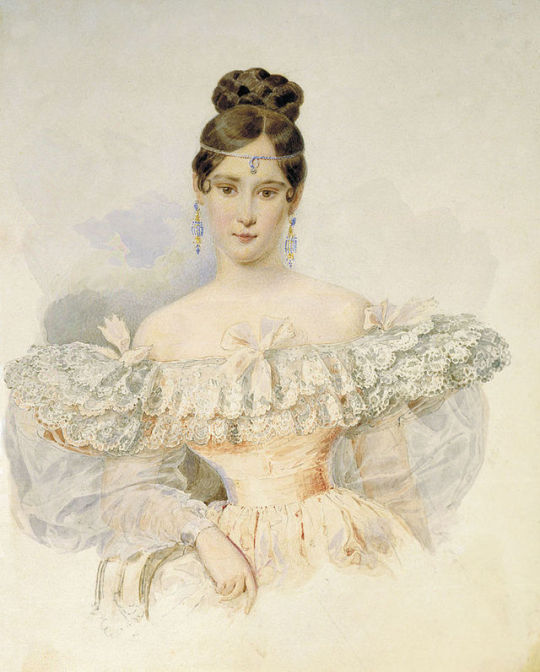
Natalia Pushkina
1 note
·
View note
Photo



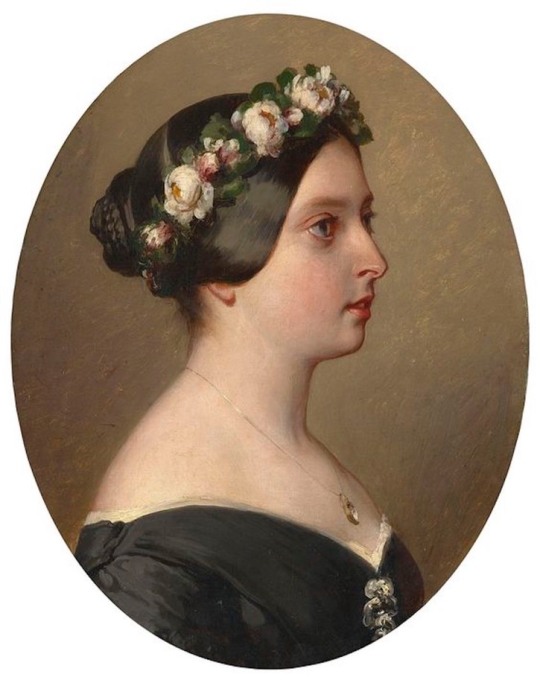

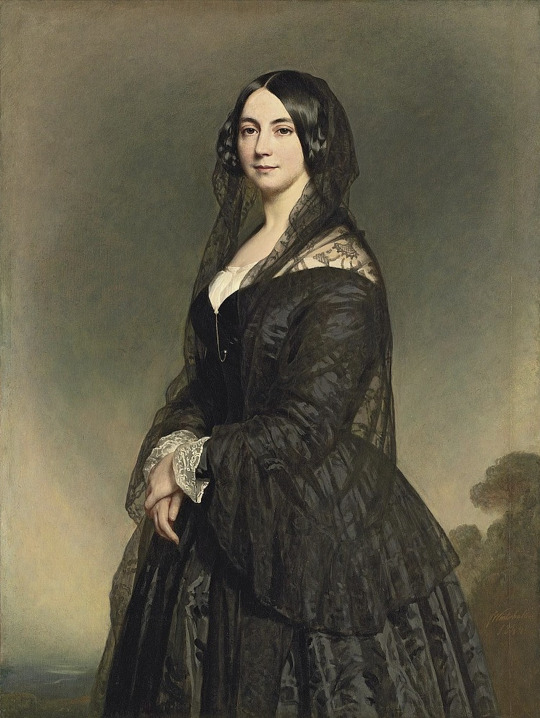



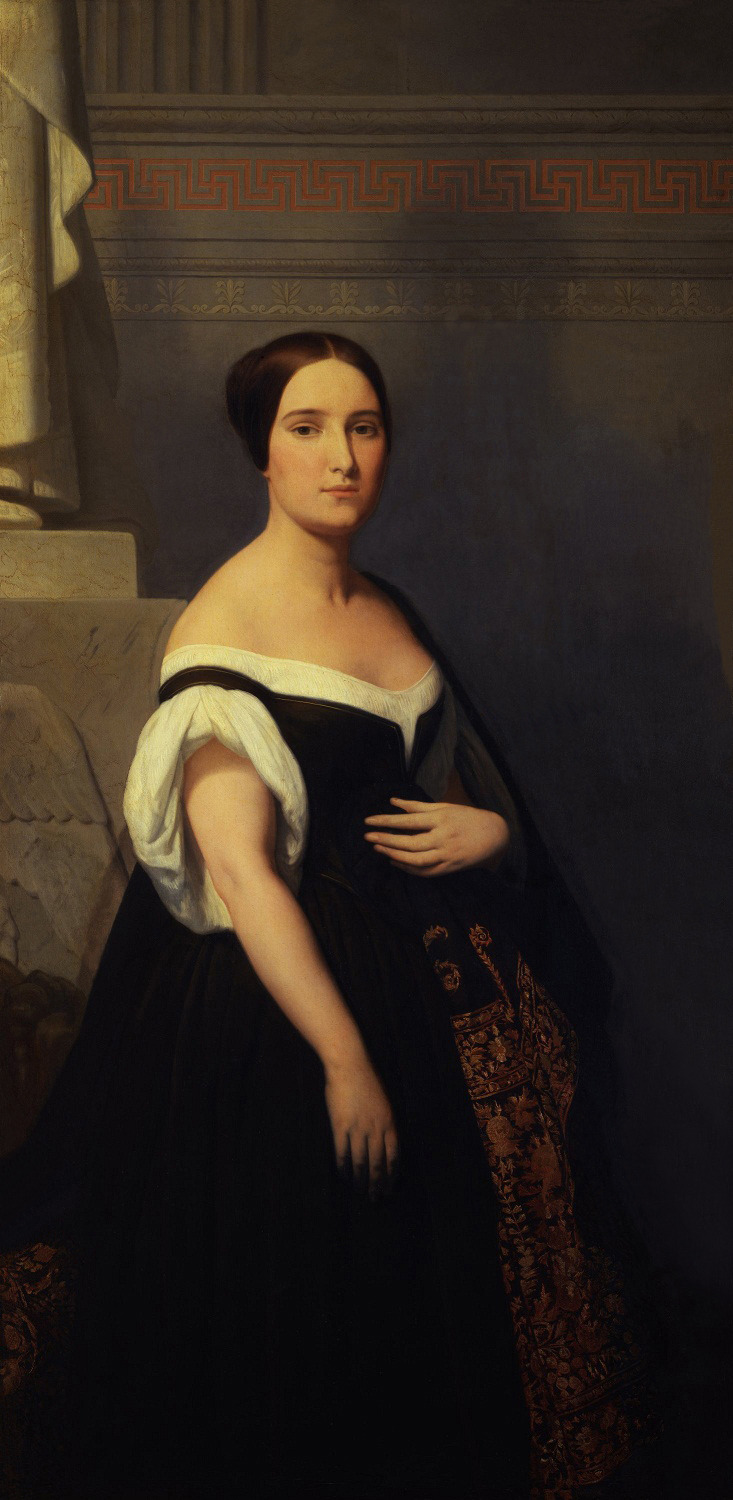
Back to 1844 -
Top: 1844 Josepha Conti by Joseph Karl Stieler (Schönheitengallerie, Schloß Nymphenburg - München, Bayern, Germany). From pinterest.es/amparomanez/arte-entre-las-flores/; fixed spots & cracks w Pshop 1224X1500 @72 649kj.
Second row left: 1844 Comtesse Caroline de Vergès née Caroline Brochant de Villliers (1806-1860) by François Louis Dejuinne (Tajan). Probably from invaluable.com/; fixed edges and spots w Pshop 667X838 @72 657kp.
Second row right: 1844 Grand Princess Alexandra Nicolaievna in red dress by Vladimir Ivanovich Hau (location unknown to gogm) From liveinternet.ru/users/4237948/post296792759/ 840X1012 @72 223kj.
Third row: 1844 Queen Victoria by Franz Xaver Winterhalter (Royal Collection). From pinterest.com/bcourtney0004/victorian-dresses/ enlarged one half 725X917 @72 136kj.
Fourth row left: 1844 Natalia Pushkina by Vlaimir Hau (Hermitage). From Sofi's photostream on flickr 1636X1973 @72 642kj.
Fourth row right: 1844 Lady by Franz Xaver Winterhalter (auctioned by Christie's). From invaluable.com/auction-lot/franz-xaver-winterhalter-mezenschwand-1805-1873-195-c-79a17f0253#; expanded to fit screen 2164X2878 @144 9.2Mp.
Fifth row: 1844 Mary Milner, Dowager Countess of Strathmore by ? (Bowes Museum - Durham, North East England, UK). From thebowesmuseum.org.uk/the-three-graces/; fixed obvious spots & flaws w Pshop 1656X2444 @300 1.7Mj.
Sixth row left: ca. 1844 Mary Shelley attributed to Richard Rothwell (Bodleian Library, Oxford University - Oxford, Oxfordshire, UK). From Wikimedia 1144X1369 @72 3.2Mp. She wrote Frankenstein.
Sixth row right: ca. 1844 Anna Benardaki, née Kipouro by Carl von Steuben (State Hermitage Museum - St. Petersburg, Russia) From the museum's Web site decreased temperature 2408X2914 @150 8Mp.
Bottom: 1844 Princess Mathilde by Ary Scheffer (Galleria d'arte moderna di Firenze - Firenze, Toscana, Italy). From Wikimedia 733X1500 @3200 283kj. Her father, Jérôme Bonaparte, was Napoleon (I) Bonaparte’s brother. She rose to prominence when her cousin rose to power as Napoléon III in 1851.
#1844 fashion#early Victorian fashion#Louis-Philippe fashion#Biedermeier fashion#Josepha Conti#Joseph Karl Stieler#Schönheitengallerie#Caroline de Vergès#François Louis Dejuinne#Alexandra Nicolaievna#Vladimir Ivanovich Hau#Queen Victoria#Franz Xaver Winterhalter#Natalia Pushkina#side curl coiffure#lace wrap#Mary Milner#straight hair#Mary Shelley#Richard Rothwell#Frankenstein#Anna Benardaki#Carl von Steuben#Mathilde Bonaparte#Ary Scheffer.
14 notes
·
View notes
Text
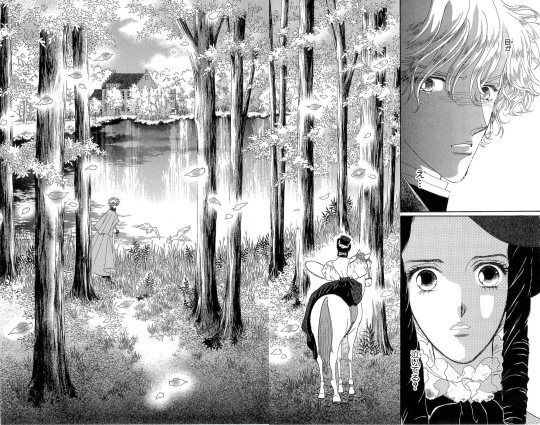

Yes, I hurt myself like this.
#they deserved to grow old together#also the contrast between the two landscapes?#heart: shattered#my poor babies#bronze no tenshi#chiho saito#natalia#d'anthès#natalia pushkina#georges d'anthès#spoilers#bronze no tenshi spoilers
31 notes
·
View notes
Photo
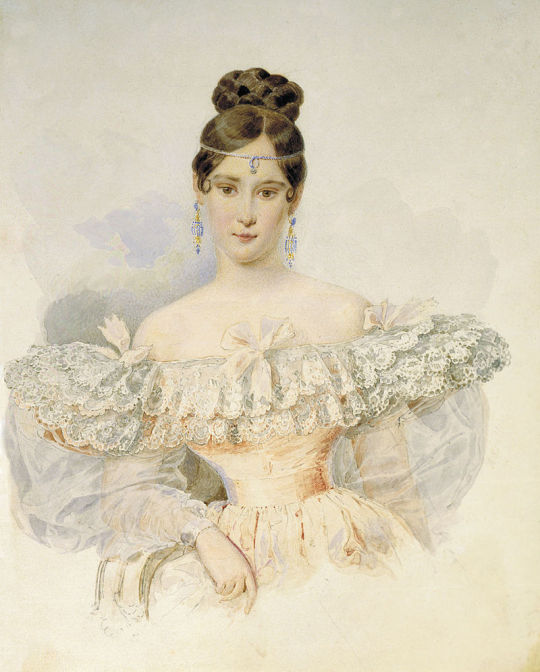
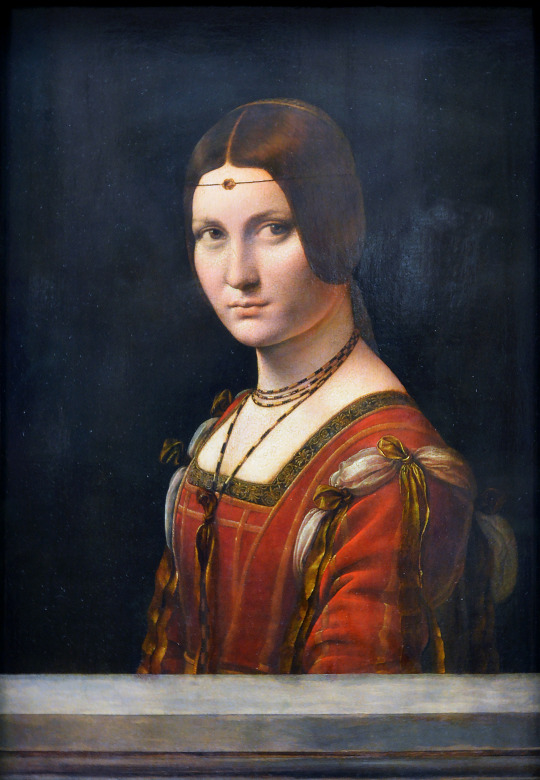




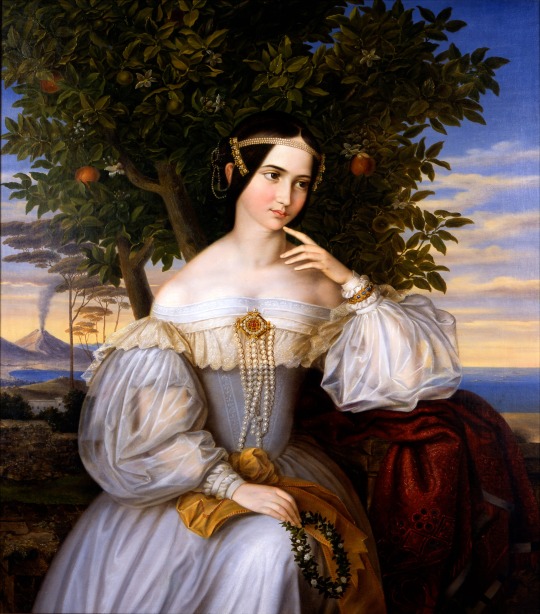

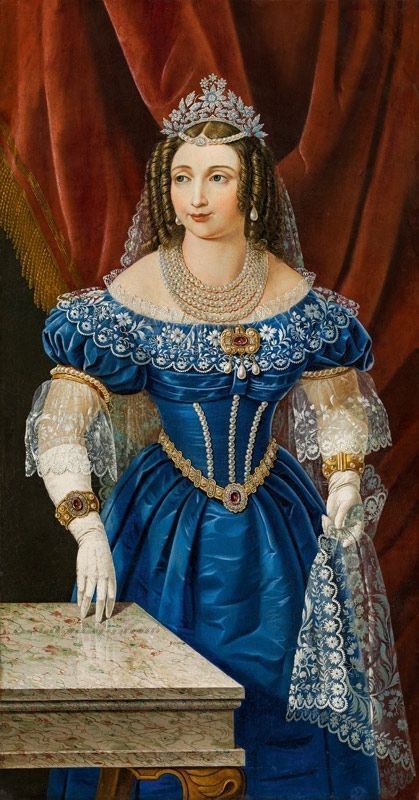
A ferronnière [fɛʁ.ɔn.jɛʁ] is a style of headband that encircles the wearer's forehead, usually with a small jewel suspended in the centre. The original form of the headband was worn in late fifteenth-century Italy, and was rechristened a ferronnière at the time of its revival in the second quarter of the nineteenth century for both day and (more frequently) formal and evening wear.
The original ornament that later became called a ferronnière was popular in 15th-century Italy, where it could be made from metal or jewels.
The nineteenth-century ferronnière was worn from the late 1820s to the early 1840s, when it was considered to enhance a high forehead, and by the 1850s, it had fallen out of fashion. One contemporary source from 1831 describes the ferronnière as "a small plait of hair, adorned in the centre of the forehead by a large brilliant, from which depends another brilliant of the pear shape." It has been described as one of the most widely worn examples of historicism in early Victorian fashion, worn as a tribute to the Renaissance alongside beaded belts called cordelières inspired by medieval clothing and hairstyles named after historic women such as Agnès Sorel and Blanche of Castile. The ferronnière could be worn for either day or evening. Alternative terms for similar ornaments were the bandelette and the tour de tête.
The term “ferronnière“ originates in 1831, and is believed to come from a 1490s portrait attributed to the school of Leonardo da Vinci, erroniously called the La belle ferronnière since the 18th century. “Ferronnière” is the feminine form of the word for “ironmonger” (in this case, referring to the wife of an ironmonger.
1. Portrait of Natalia Pushkina by Alexander Brullov, 1831-2
2. La belle ferronnière, school of Leonardo da Vinci, 1490-96
3. Portrait of the Marquise Chasseloup-Laubat, Joseph-Désiré Court, 1831
4. Lilian Russell
5. Théodolinde de Beauharnais, Princess of Leuchtenberg, 1840
6. Mary of Bavaria, Queen of Saxony
7. Moritz Daniel Oppenheim, Portrait of Charlotte de Rothschild, 1836
8. Francois Joseph Kinsoen (Kinson), Portrait of a Lady, 1810-15
9. Portrait of Archduchess Sophie of Austria, neé Princess of Bavaria, mother of Kaiser Franz Josef. 1820′s
#fashion#jewelry#hair ornaments#ferroniere#renaissance#renaissance fashion#19th century#19th century fashion#1830s#1830s fashion#1830s hair#thanks to a commenter for reminding me of the name for this!
742 notes
·
View notes